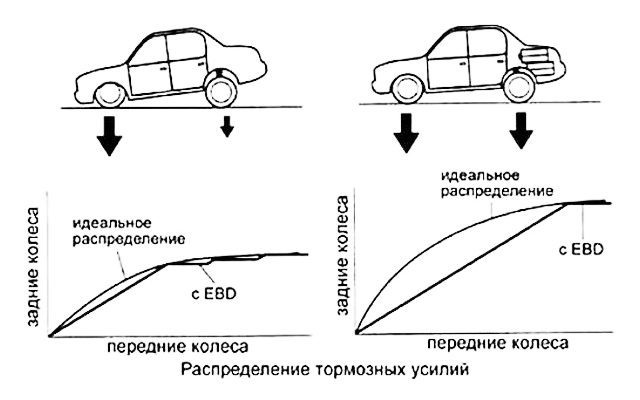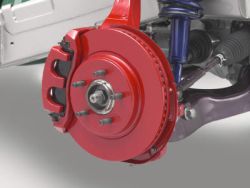
EBD (electronic brake force distribution) and EBV (electronic brake force distribution)
 The abbreviation EBD comes from the English Electronic Brakeforce Distribution and is an electronic system for intelligent distribution of the braking effect in accordance with the current driving conditions.
The abbreviation EBD comes from the English Electronic Brakeforce Distribution and is an electronic system for intelligent distribution of the braking effect in accordance with the current driving conditions.
EBD monitors the change in load on individual axles (wheels) during braking. After evaluation, the control unit can adjust the braking pressure in the braking system of each wheel to maximize the braking effect.
The abbreviation EBV comes from the German term Elektronische Bremskraft-Verteilung and stands for electronic brake force distribution. The system regulates the brake pressure between the front and rear axles. EBV operates with significantly greater precision than mechanical brake force distribution, i.e. it controls the maximum possible brake effect on the rear axle so that the rear axle does not brake. EBV takes into account the current vehicle load and automatically distributes the optimum braking effect between the brakes on the front and rear axles. The optimum braking performance of the rear wheels reduces the load on the brakes of the front wheels. They heat up less, which reduces the risk that the brakes will loosen due to heat. Thus, a vehicle equipped with this system has a shorter braking distance.

